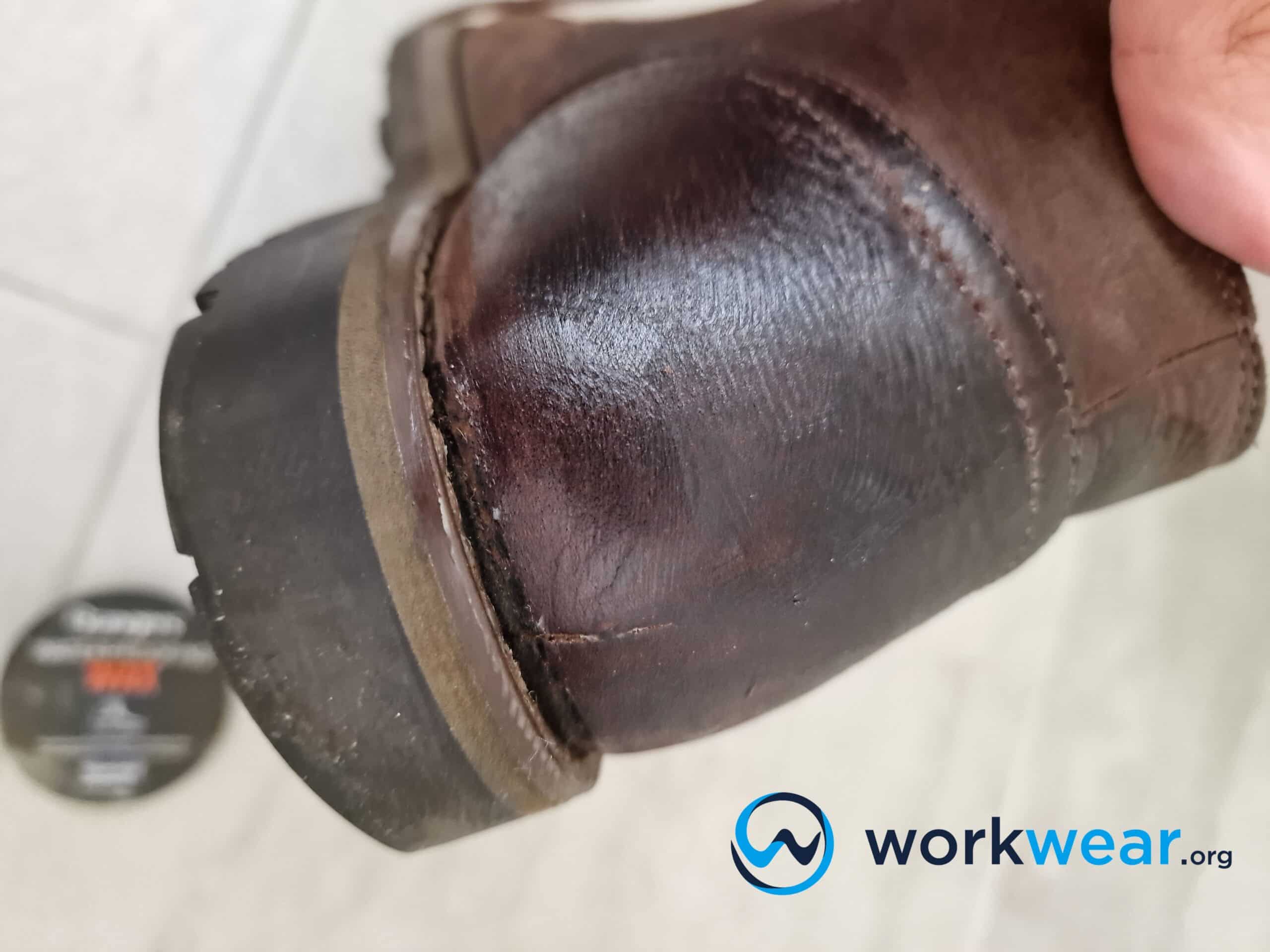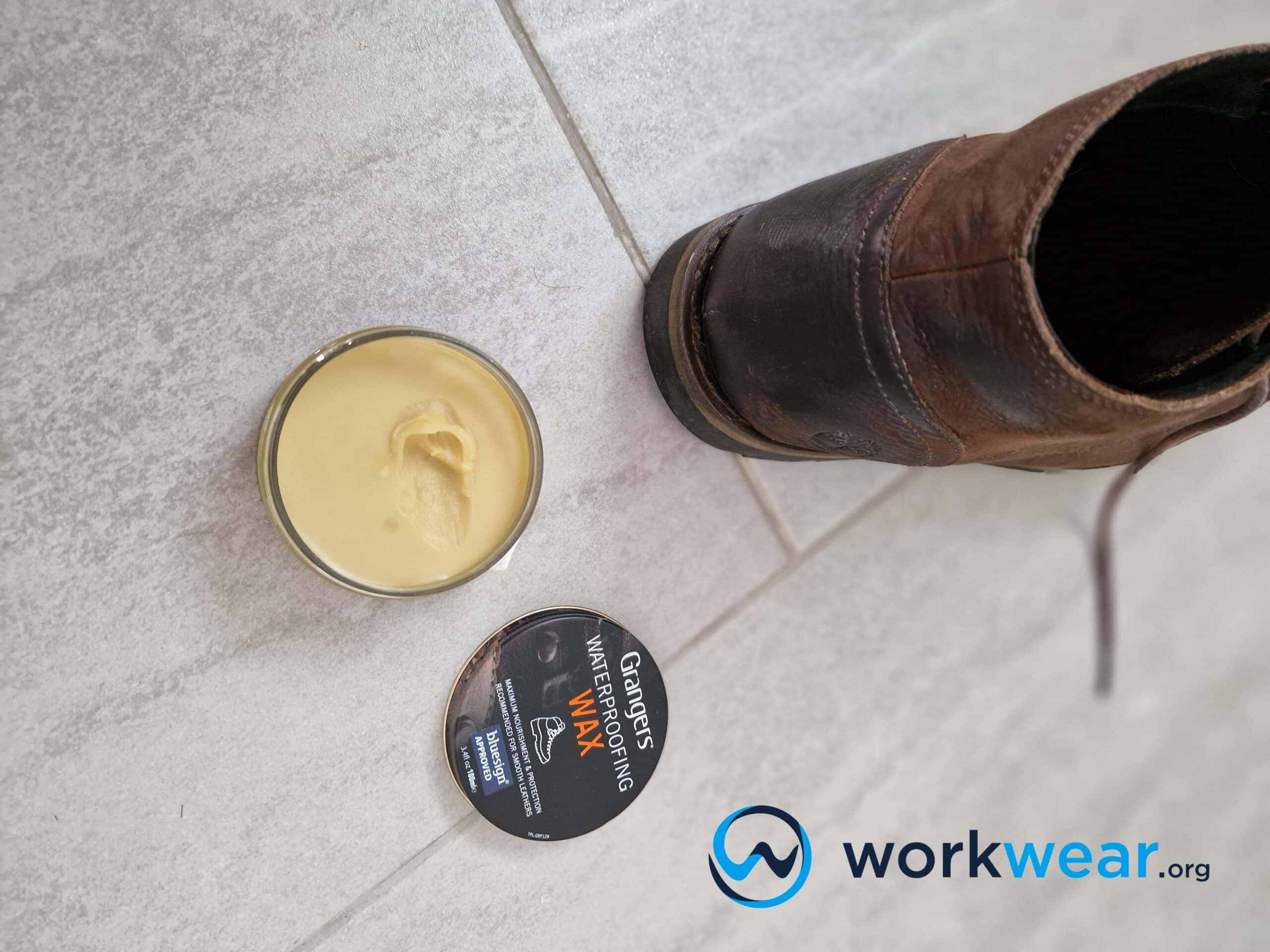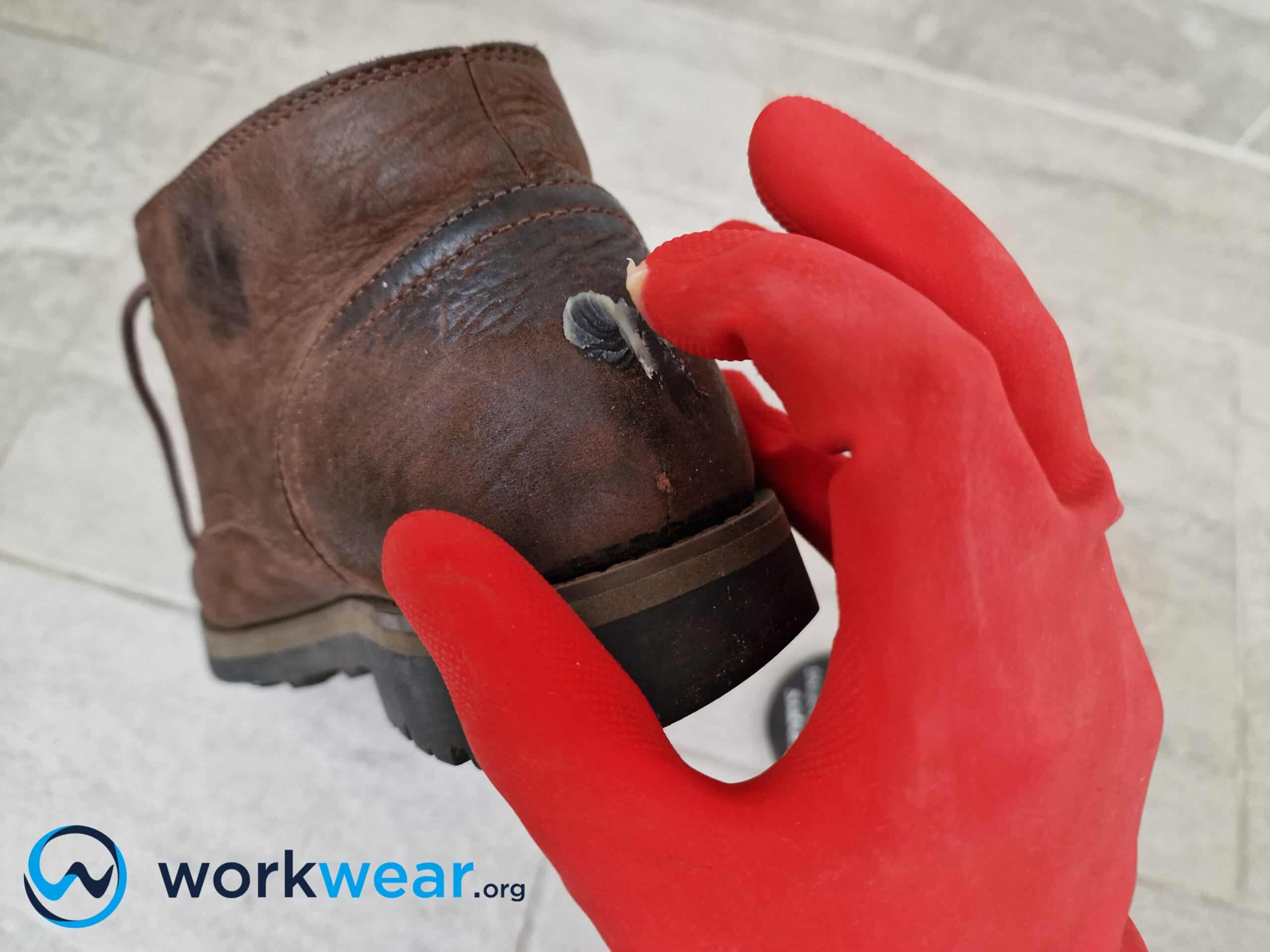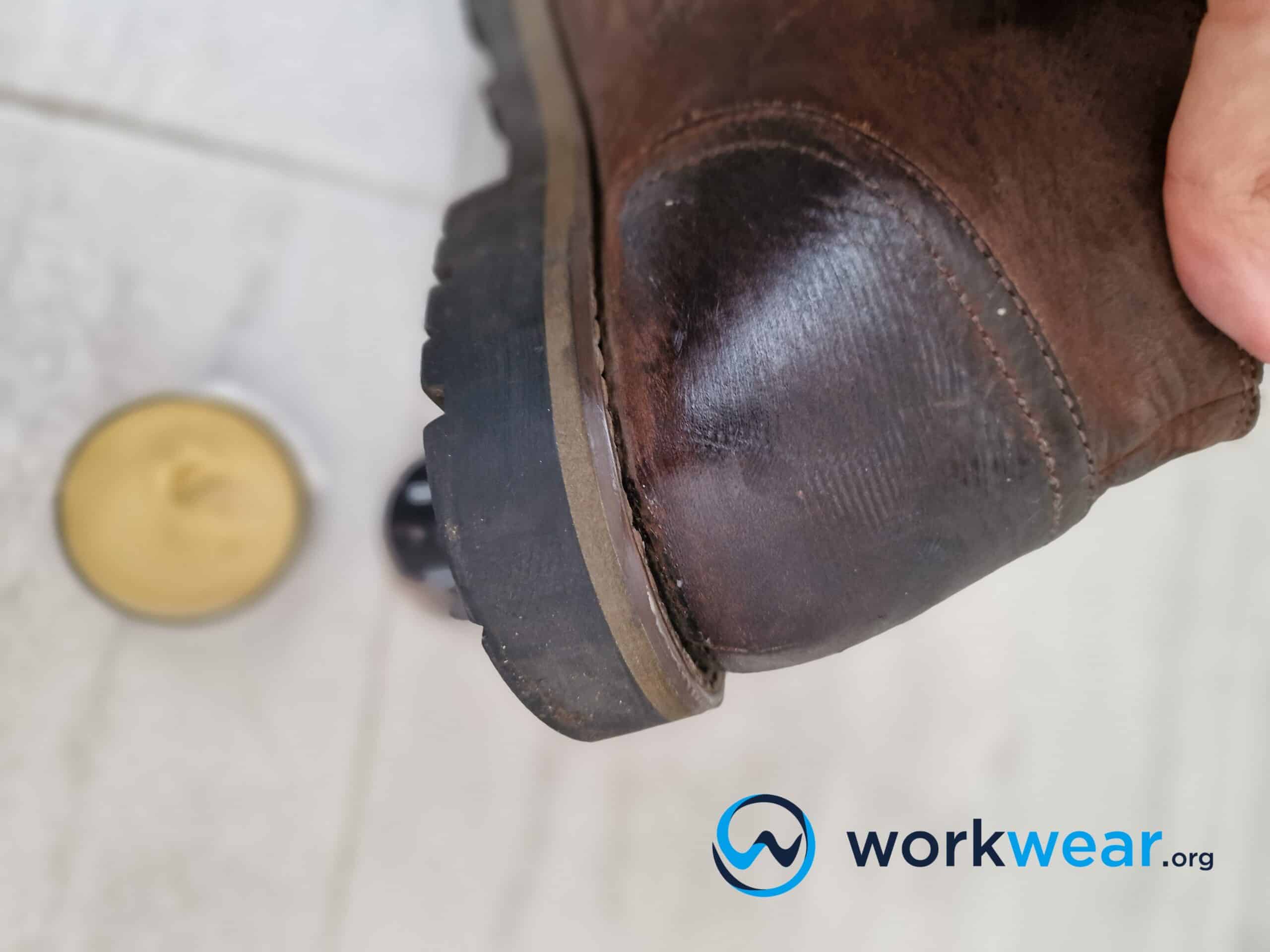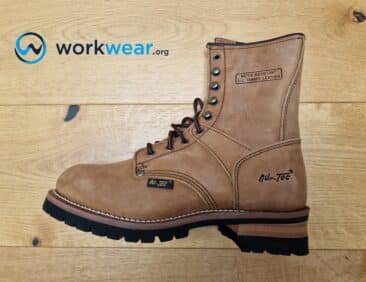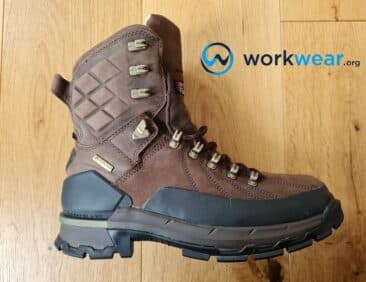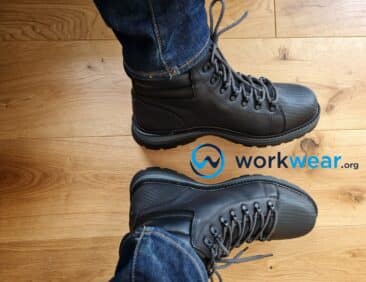Why & How to Wax Your Work Boots
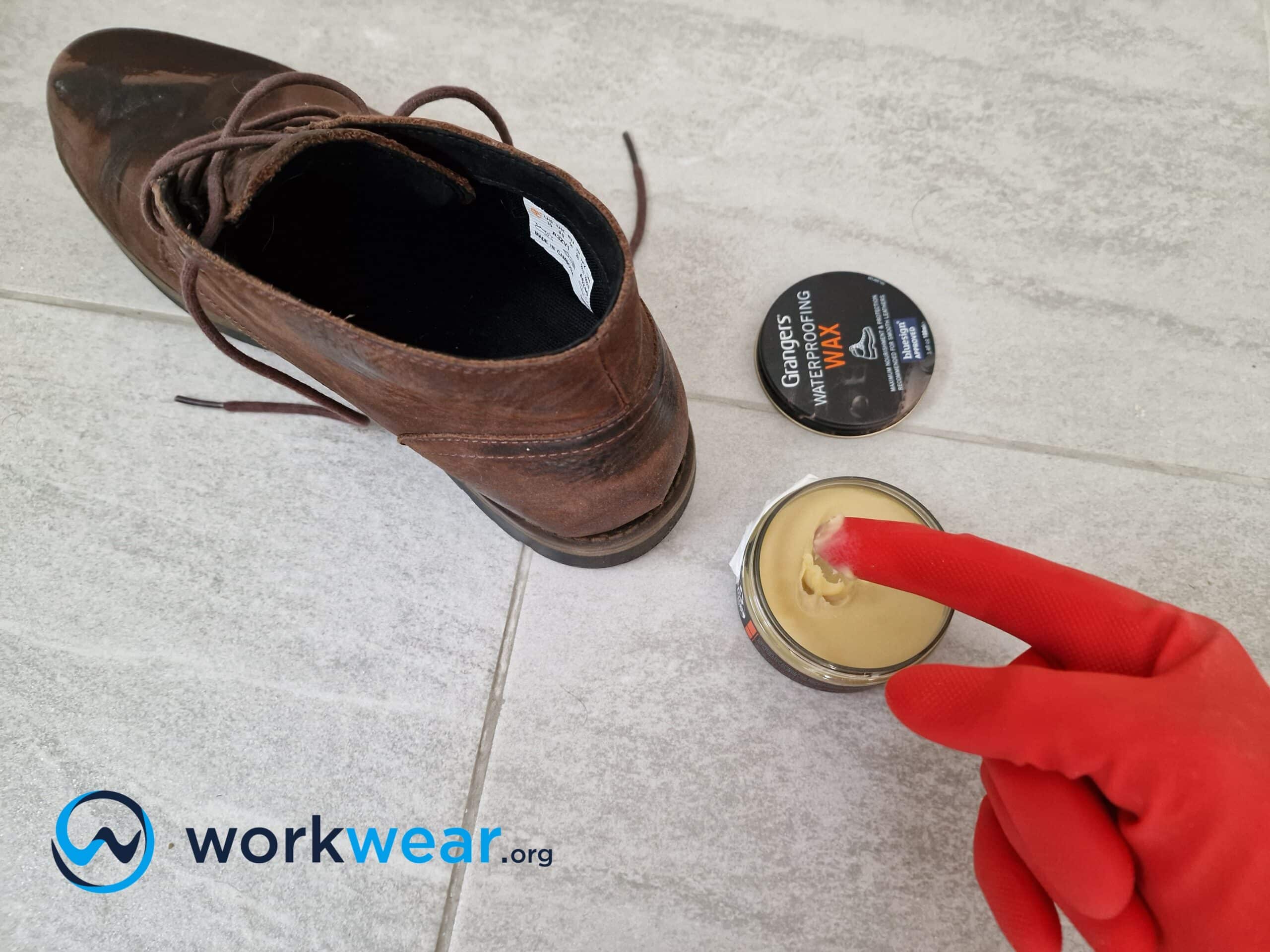
Leather work boots are designed to keep your feet comfortable and protected in the workplace. Taking care of your work boots prolongs their life, so they can continue to take care of your feet while you’re on the job. Aside from cleaning them using the appropriate products and methods to remove mud and other debris, it’s also important to wax the boots regularly. Waxing may seem unnecessary to some, but the benefits you’ll enjoy with your properly maintained work boots will be more than worth the extra effort to complete this step.
The wax forms a seal on the boots’ leather uppers, protecting against external threats encountered in different job sites. In this article, we’ll discuss the importance of waxing work boots and the right way to do it to maximize its effect.
Why Do You Need to Wax Work Boots?
To develop/maintain water resistance
When the wax is applied to leather work boots, an invisible barrier is created to keep water from penetrating the leather material. Waxing increases the leather’s resistance to water, preventing it from seeping into the footwear so the feet won’t get soaked when the boots are used in wet conditions – such as when working outdoors and it starts to rain hard.
The water resistance also protects the leather against extreme wetness and its negative effects, such as dryness, cracks, and light scratches.
To protect against oils and stains
The wax layer shields against water and also forms a barrier against oils and stains. Waxing stops oil-based substances from damaging the leather and protects the feet against harsh agents irritating the skin. In addition, waxing protects the leather uppers from becoming stained by strong substances that can accidentally be spilled on the boots.
With the protective wax layer, the leather work boots resist staining and can continue to perform and look their best for much longer.
To maintain the leather’s supple texture and shine
After applying wax to the leather, the uppers can more easily be buffed to a beautiful shine. The shiny appearance may be required as part of strict uniforms or dress codes for some professions, such as those that deal with law enforcement or security.
The shiny leather also resists dust accumulation more easily as the dirt can quickly slide off the shiny, smooth surface instead of sticking to it. Waxing also helps maintain the leather uppers’ supple texture for longer, making them more pliable and adaptable to the feet’s movements.
To prevent cracking due to dryness
Waxing keeps the leather properly conditioned to prevent it from drying and forming unsightly cracks. In addition, the protective wax layer helps the uppers from quickly drying when the boots are exposed to water, mud, and other sources of moisture that can be encountered on various worksites. As the wax prevents drying, it also helps maintain the leather’s flexibility so that the boots can be used comfortably for longer.
How to Wax Your Work Boots
Follow these steps to get the greatest number of benefits from the waxing procedure on your leather work boots.
Remove the laces
Before proceeding with the waxing, remove the shoelaces and set them aside. Wipe the laces to ensure they’re as clean as possible when you put them back after the boots have been waxed.
Wipe the boots
Using a dry, non-abrasive cloth, gently wipe the leather uppers to remove dust build-up. Make sure to wipe along the seams, as dirt can easily accumulate on the space connecting the upper and the sole. Also, don’t forget to wipe the eyelets, as debris can get stuck in the holes and gaps where the shoelaces go in.
Apply the wax
Wrap your index and middle fingers in a clean piece of cloth. Swipe the cloth across the top of the tub to get a small amount of wax. We used Grangers Waterproofing Wax, which is made from natural beeswax and offers superior resistance to water, oils, and stains. The soft formula is easy to apply and glides effortlessly onto the leather uppers.
Massage the wax into the leather
Using a circular motion, gently but firmly massage the wax into the leather material. To ensure you won’t miss an area, you can work from the top of the boots to the bottom (or vice-versa). Next, work the wax into the seams and the top where the eyelets are located. It’s also important to rub the wax into the tongue, so this component gets the conditioning and protective benefits.
Please note that if you wax your boots their color will change, and will become darker
Let the boots dry
After rubbing in the wax, let the boots dry for around 10 minutes to allow the product to seep into the leather.
Apply 1 or 2 more coats
Grangers Waterproofing Wax recommends applying 2-3 thin coats to get maximum benefits from the waxing procedure. After each coat, the boots should be allowed to dry completely before applying another coat of wax.
Buff for shiny boots
To achieve shiny work boots, use a waxing brush to buff the leather to a luxurious shine. To get an exceptionally glossy finish, you can do the buffing after each coat of wax before proceeding to the next wax application.
Conclusion
Waxing is an essential step that needs extra effort – but it is more than worth it if you want to take good care of your leather work boots. The procedure delivers multiple benefits to the work boots, including improving or developing the leather’s resistance to water, oil, and stains. It also helps prevent cracking due to dryness and maintains the leather’s shine and supple texture. Before waxing the work boots, the shoelaces must be removed first so the small leather portions between the eyelets will be easier to reach. Next, the uppers need to be wiped clean to remove any trace of dirt. Next, we applied Grangers Waterproofing Wax using a clean cloth, taking care to massage the small amount into the leather before allowing the boots to dry completely. For best results, 2-3 coats of wax should be applied while allowing the boots to dry completely for around 10 minutes between coatings. Buffing the boots will make them shiny, and an even more intense shine can be achieved by buffing between coats.
FAQs
- What materials or substances are used for waxing leather work boots?
- There are many natural and synthetic materials used as waxing agents for leather, but the most common ones are beeswax (which is used in Grangers Waterproofing Wax), lanolin, and carnauba.
- Can waxing darken leather?
- Yes – the wax tends to make leather darker. This may be an issue for light-colored boots, and it’s best to test a small area first to check if it will react to the wax before proceeding to the wax application on the entire upper. However, the darkening action also has its advantages – such as when you want light-colored boots to become darker or to bring back the rich color of leather uppers that have faded over time.
- Is leather wax the same as leather conditioner?
- No – these are different products, although the wax also helps condition the leather uppers. The wax product’s main purpose is to deliver or improve the leather’s water resistance while also helping maintain the material’s shine and supple texture. Meanwhile, the leather conditioner provides a deep nourishment and conditioning level that typically can’t be offered by the wax. As a result, the two products can be used on leather work boots for maximum benefits.
- What happens if too much wax is used?
- Too much wax can cause the build-up of white residue on the seams or folds of the leather upper. Excessive waxing can also dry up the leather because the conditioning agents are prevented from penetrating the material. Therefore, applying only a small amount of wax to leather work boots is important to get the maximum benefits and avoid the drawbacks of excessive waxing.
